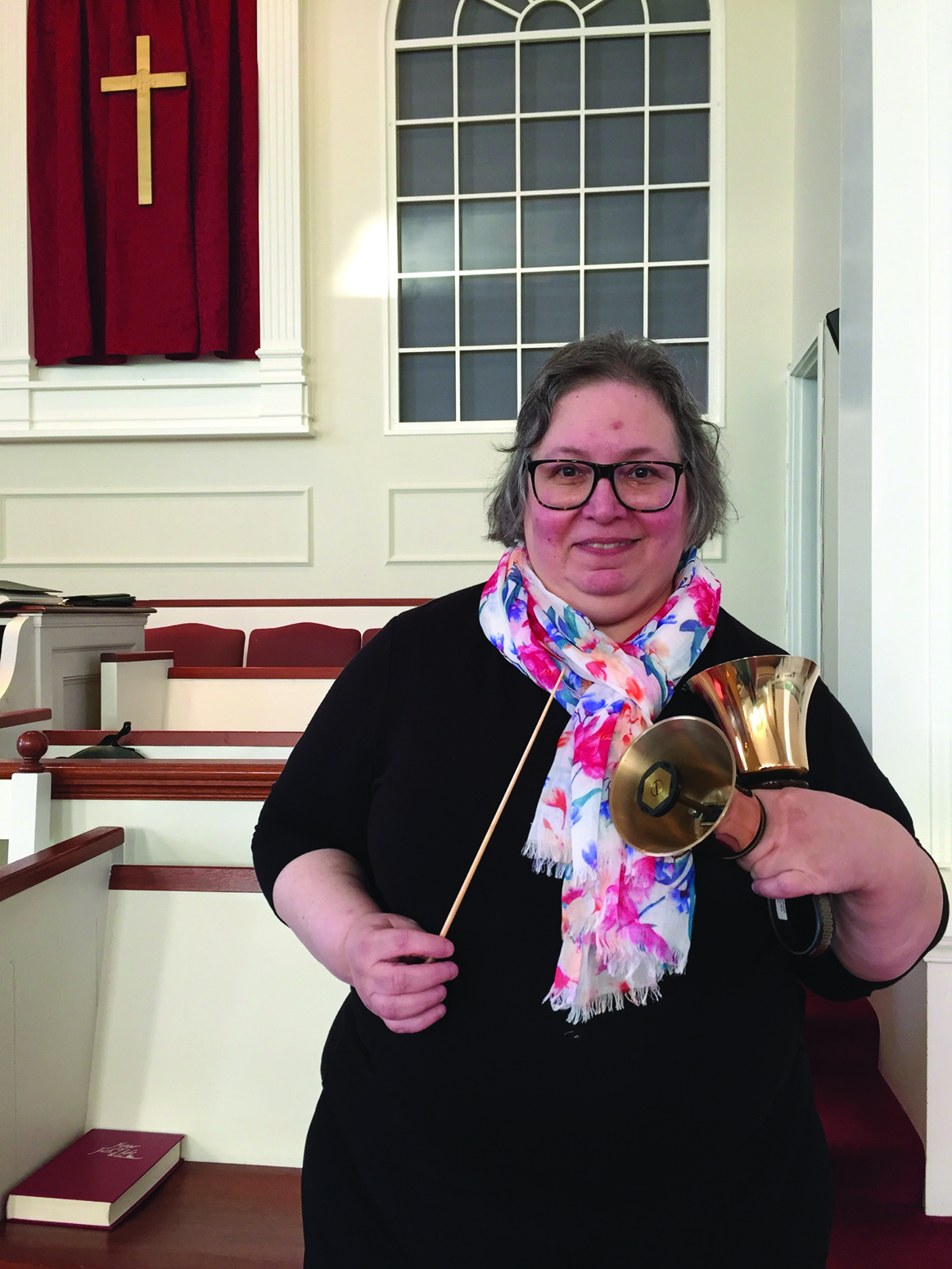Oscar Hammerstein of Rodgers and Hammerstein fame once said, “A bell’s not a bell ‘till you ring it, a song’s not a song ‘till you sing it.” Martha Goodman, the new bell choir director at Wrentham’s Original Congregational Church, would likely agree with that sentiment.
The church’s handbell choir has been in existence for close to 20 years, but Goodman brings a new level of expertise and knowledge to the esoteric role. Her avocational training is in singing, and she plays no other instruments, yet she has become a specialist in the musical art of bell ringing.
In the 1980s, Goodman was a member of Old South Church in Boston. The new music committee chairman at the time discovered the church owned one of the first sets of English handbells imported into the U.S. The handbell program, however, had been inactive for many years.
“When he found out that Old South had bells, he said ‘we need to get these bells out of the closet,’” recounted Goodman. “He told me, ’Bells shouldn’t be living in a closet. They need to be rung.’”
He decided to start a bell choir ensemble, and invited Goodman to try ringing.
“I went to the first rehearsal, and got hooked right away,” she said.
Goodman eventually moved on to Wellesley Hills Congregational Church, which had an active bell ensemble. When the bell choir director there left, she found herself in charge of the program. She started taking workshops and classes in handbell ringing, and traveled to events around the country to sharpen her skills and become knowledgeable in the correct way to teach other ringers.
Eventually Goodman helped found the New England Ringers, an audition-only community group, which draws ringers from four states. She rang with them for ten years, before becoming director of the handbell choir at Reading’s First Congregational Church. She is starting her 20th year there, and will continue in that role while leading the Wrentham church’s program, too.
Handbell music is relatively new in the U.S. The first set of handbells was brought to this country by a Bostonian named Margaret Shurcliff in 1902. Shurcliff brought the bells back from England, where she became the first American woman to learn how to ring a complete peal on tower bells. Handbells were developed in the early 17th century to practice change ringing, so church bell tower ringers could practice their music without disturbing the entire village. The ringing of handbells themselves for tunes came much later.
In 1924, Shurcliff, along with her children and friends, began a Christmas Eve tradition of going door to door on Beacon Hill, ringing handbells in a unique version of Christmas caroling. The Beacon Hill Ringers, as they were called, eventually became known as the Back Bay Ringers, and are still in existence today.
According to Goodman, handbell enthusiasts benefit from the instrument’s relatively young musical history.
“Many if not most of our handbell composers are alive and we can come to know them personally and communicate with them,” she said. “It’s a whole different experience from singing a Bach cantata, for example—he’s been dead for over 250 years. In that sense, it’s a very modern phenomenon.”
Goodman says anyone can learn to ring a handbell, which is considered a percussion instrument. There is a correct method to ringing a bell, however, and proper mechanics are especially important for bigger bells, which can weigh 8 pounds. Goodman is well-versed in injury prevention, and considers it an important part of her job.
“This is a physical activity. You could say that it is an athletic activity, almost,” she said. “It’s important that someone uses good technique so they don’t injure themselves. If somebody gets hurt on my watch, it’s my fault.”
Bells can be used in a wide range of musical styles and genres, explained Goodman.
“People who have not heard the instrument are amazed at the different kinds of sounds it makes,” she said.
Handbell ringing has come to the forefront because of its use in church settings, particularly Protestant settings. Goodman believes a church’s music program is one of the most important components of the service.
“I think that music is critical in worship,” she reflected. “For some people, it is the way in which they experience God. It’s how I experience God. It’s almost more important than the spoken word.”
Bells have always had a prominent role in worship, added Goodman. Bells were used to ward off evil spirits, and in some cultures, bells were considered to have souls. When they broke or were no longer useable, they were given Christian burials.
“Bell ringing is an evolving musical art, and it’s also as old as the hills,” observed Goodman. “Ask if your church has bells in the closet. If there are bells, see what you can do to get those bells out of the closet. A bell has a voice that shouldn’t be silenced.”
The handbell choir at the Original Congregational Church performs monthly at worship services. On December 10, the bell ensemble will perform in the church’s holiday all-music concert. The community is welcome. For more information, visit www.occhurch.net/.

Issue Date:
November, 2017
Article Body:
